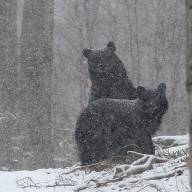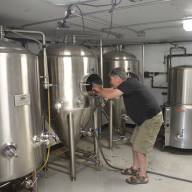By Ben Falk
It’s astounding what people will throw $100,000 at these days. Promise to attempt to pick up tens of thousands of plant root fragments that the river continually distributes and buries across miles of ground via floods – and people lurch forward, “take my money!” I’m talking about Japanese knotweed – but let’s be scientific and call it by its actual name rather than its scapegoating label – Fallopia japonica - or commonly, Itadori. This vigorous plant that some love to hate was the subject of a recent opinion piece in VT Digger by Curt Lindberg of the Waitsfield Conservation Commission – the same group which is so committed to conserving wild nature that they planned to spray chemicals along the river banks in the name of attacking wild plants. Make it make sense.
This plant isn’t the cause of a “destructive cycle” as Curt wrote, but like all plants is a response to disturbances, soil, climate, and other conditions. The photo in his piece shows the actual story: a steep stream bank with a tilled agricultural field bordering the river channel. Rather than the flood plain forest which has co-evolved with the river here for millennia, it is a monoculture of mechanized agriculture obliterating soil and plants all the way to the river. And now Itadori clings to the thin strip between this field and the river. Yet Curt and others persist in blaming a select few immigrant plants for this situation rather than the human action which not only begets this situation but continues it.
Annual agriculture in the flood plain has and continues to undo a complex forested ecosystem, eliminates shade from the area, thermally and chemically pollutes the river itself, accelerates erosion and blows open niches in the ecosystem in which dispersive, pioneering, shade-intolerant plants to thrive -- to name just a few of its harms. Enter Itadori and other plants in response. We might be grateful that any plants thrive under such abuse. Add to this picture other anthropogenic watershed dynamics above the river corridor wherein roads, ski areas, and new housing developments, parking lots and other impervious surfaces accelerate the “flashiness” of the rivers’ response to rain/snowmelt events as well as intensified storms, and you have a perfect situation for new species to be part of the matrix of biological responses.
Like much of the “invasive species” war – the mindset at work here of blaming single species for complex and dynamic situations is not only faulty and based in a command-control approach of forcefully battling symptoms rather than systemically addressing root causes, it doesn’t work. It never has worked and it is destructive in and of itself. The actions Curt and his fellow crew of river bank excavators undertake involves ripping up organic matter trying with futility to get at all of the roots, disturbing the rest of the natural communities embedded within and around the stands of Itadori, as well as those in their way to accessing them. Their work leaves bare soil as the only reliable result. I have photographs of this evidence from an array of their “project sites.” This is not ecological restoration – it’s not restoring anything. It is simply a war against a newly-arrived, particularly successful, rapid carbon sequestering, pollutant-remediating, and unusually useful species that a self-selected group of people don’t believe belongs here. It’s particularly ironic (and par for the course) and telling that the troves of “alien invasive” haters are overwhelmingly white people themselves originating from Europe, playing gatekeeper as to who belongs here the most. And it is these people who arbitrate the assaults on the big bad aliens. It’s an ages-old story alas – inherently colonial and destructive at its root.
If Curt and his band of determined but misguided warriors want to participate in their local ecosystem for net benefit, they have many options at their disposal (including planting diverse ecosystems into excess lawn scapes, rehabbing abandoned parking lots, and the like) beyond driving hundreds/thousands miles around to project sites from Burlington and around the state to attack plant communities on the river banks. Firstly, if scientific rigor is meaningful to them, they would start by conducting a basic cost-benefit analysis of their work. What are the harmful costs of it? Add up bare soil created, miles driven, time spent (which could be spent doing definitively positive work like planting trees for instance), materials and fuel used, etc.
Much of these heroic efforts spew carbon, create new pollution, and damage species diversity, at least in the short term. Riverbanks are damaged by groups of people wielding axe-mattocks turning up soil – this isn’t controversial. Then add up the potential benefits – erosion control, species diversity increases, etc. that they believe might happen eventually from these actions. Then present them in a few scenarios for the public to review and comment on. Until then, please stop causing guaranteed harm for dubious potential benefit. The public deserves no less. We never voted for you to attack plant populations along our riverbanks. And if you want us to then please present some evidence of the net benefit to our community. Until then many of us actually don’t want more highway traffic and associated hazards, erosion, and pollution here. If you’d like to improve the ecosystem of the Mad River Valley through actions with reliably positive outcomes, there is so much we can do and I’d be happy to help lend a hand; they don’t involve destroying plants, but do require destroying things like asphalt, stormwater conveyances and non-point source pollution by slowing, spreading and sinking water flows, installing diverse plant scapes and other creative efforts.
Falk lives in Moretown.












